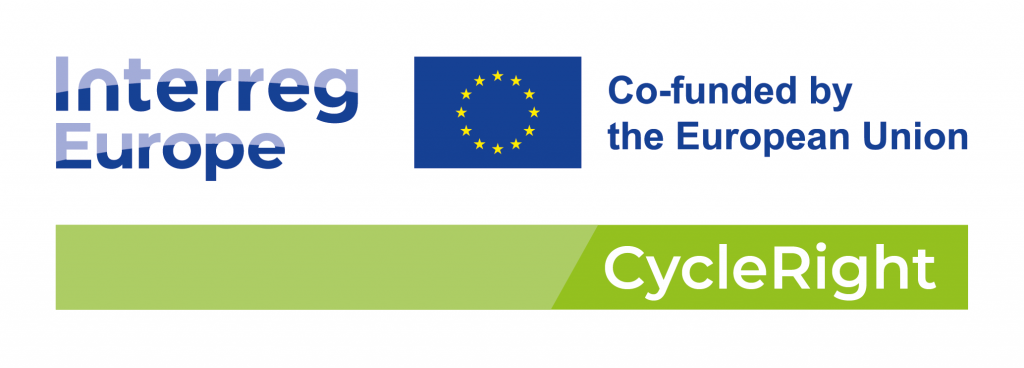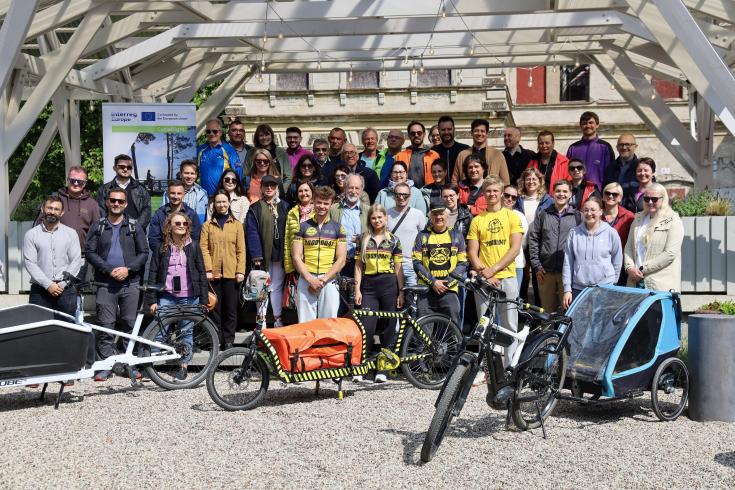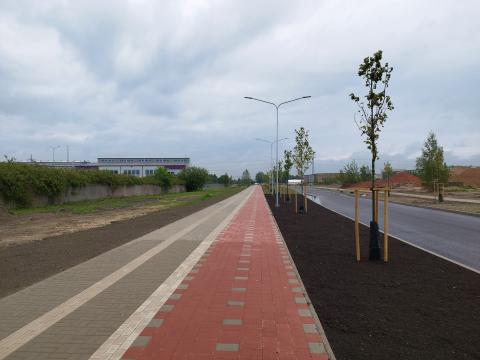

CycleRight’s third study visit took place on 17–18 June 2025 in Liepāja, Latvia. Nestled on the Baltic Sea coast in the Kurzeme region and home to around 70,000 residents, Liepāja is often called the “city of sea, music and wind.” It is also a bicycle-friendly city, with a growing network of cycling paths that make it easy for both locals and visitors to get around and explore. During this study visit, we examined the development of cycling in Liepāja and its surroundings, looking at the successes and challenges. We also explored how climate targets, cultural tourism and cycling initiatives are coming together to support sustainable regional development.
Mobility plans and cycling infrastructure development
The study visit began with an open invitation by the Mayor of Liepāja, inviting project partners to share their observations and suggestions regarding the city’s cycling network. The network now spans about 63 km, an impressive increase from just 500 m in 2007. The expansion has been supported by Liepāja’s ambitious climate commitments, culminating in the city being awarded the European Commission’s Climate Neutral and Smart City Mission Label in 2024.
Liepāja is also the first Latvian city to develop a sustainable urban mobility plan (SUMP), which focuses on promoting inclusive and active transport modes and shifting people away from private motorised vehicles to bicycles. The SUMP is being developed as part of the URBAN project “Plans for Urban Mobility (PUMA)” and is scheduled for approval at the end of September 2025. Updates can be followed on the project’s LinkedIn page.
Through its climate-neutral strategy, Liepāja plans to reduce its CO₂ emissions by 80% between 2006 and 2030, and achieve full climate neutrality by 2050. Given that transport contributes around half of the city’s CO2 emissions, Liepāja has made sustainable mobility one of its core priorities. By 2030, the city aims to expand its cycling infrastructure to 90 km.
Beyond building more cycle paths, the city is improving bicycle parking at schools, workplaces, shopping centres, and recreation areas. Social and community events are also organised to promote cycling, even in partnership with swimming clubs.
The potential of greenways
An interesting development in Latvia is the creation of greenways, disused railway lines and canal towpaths that have been repurposed into accessible, safe, and easy-to-use routes for walking and cycling. Around 500 km of greenways have already been created with the support of municipal, private, and public funding. Although most of these routes are located in northern Latvia, a representative of the Latvian Greenways Association emphasised that there is potential across all regions, including Kurzeme. Here, greenways could be explored as part of the EuroVelo network, offering a safer alternative to sections currently lacking separated cycle lanes.
Ilze Amerika, a greenways cycling activist, highlighted how these routes bring people together through various events, such as greenway hikes where singles can meet each other in a unique setting.
Cycling infrastructure at the Liepāja Industrial Park
One site visit was to the former “Liepājas metalurgs” factory, which is being transformed into the Liepāja Industrial Park, with greener and more environmentally friendly businesses. Partners were pleased to see the ongoing construction of cycling infrastructure along eight new streets, which will support both sustainable mobility and the economy. They noted that creating a well-planned green transport network as part of brownfield revitalisation helps make the area more attractive to investors, bringing economic benefits.

Exploring and evaluating EuroVelo 13 and EuroVelo 10
Other practical bike tours gave partners the chance to explore and assess EuroVelo 13 and EuroVelo 10. Read more about these routes, their cultural significance, and the good and bad practices identified by the project partners in this article.
About CycleRight
The CycleRight project, an Interreg Europe project co-funded by the European Union, aims to improve a set of policy instruments targeting sustainable urban mobility by sharing good practices from the eight participating regions. The learnings will be fed into a Climate Resilient and Inclusive Planning Cycling Guide. Read more and follow the CycleRight project on its website.
Disclaimer: This article only reflects the author’s views. The Interreg Europe programme authorities are not liable for any use that may be made of the information contained therein.
Republished from the European Cyclists’ Federation (ECF) website, the original article is available at: https://www.ecf.com/en/news/sun-cycle-route-a-synergy-of-trans-eu-transport-investments-cycling-tourism-and-rural-mobility/

